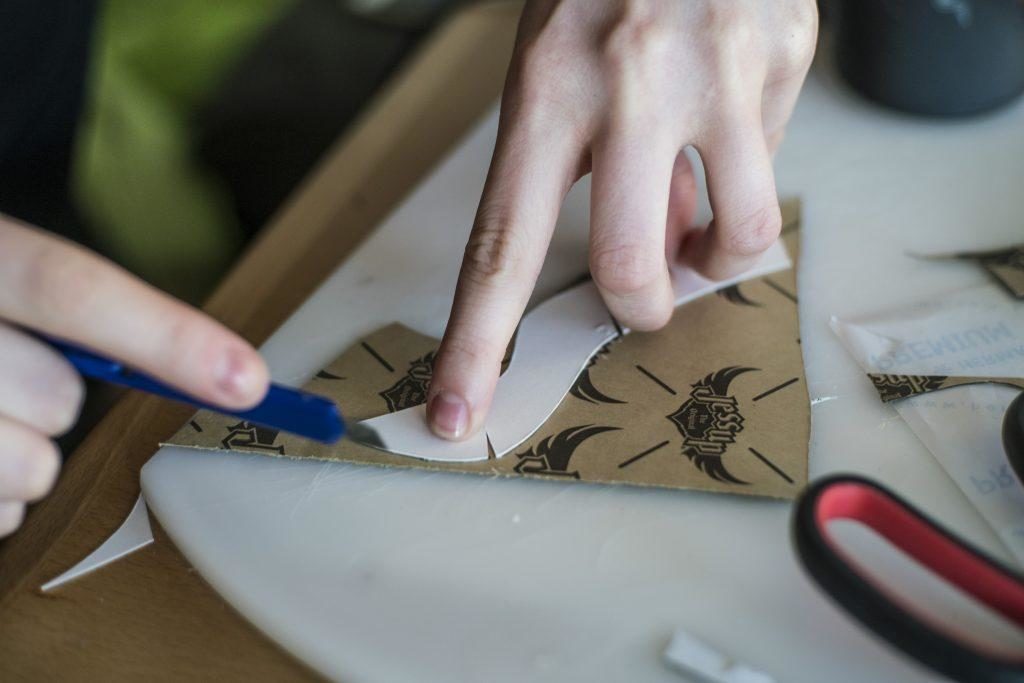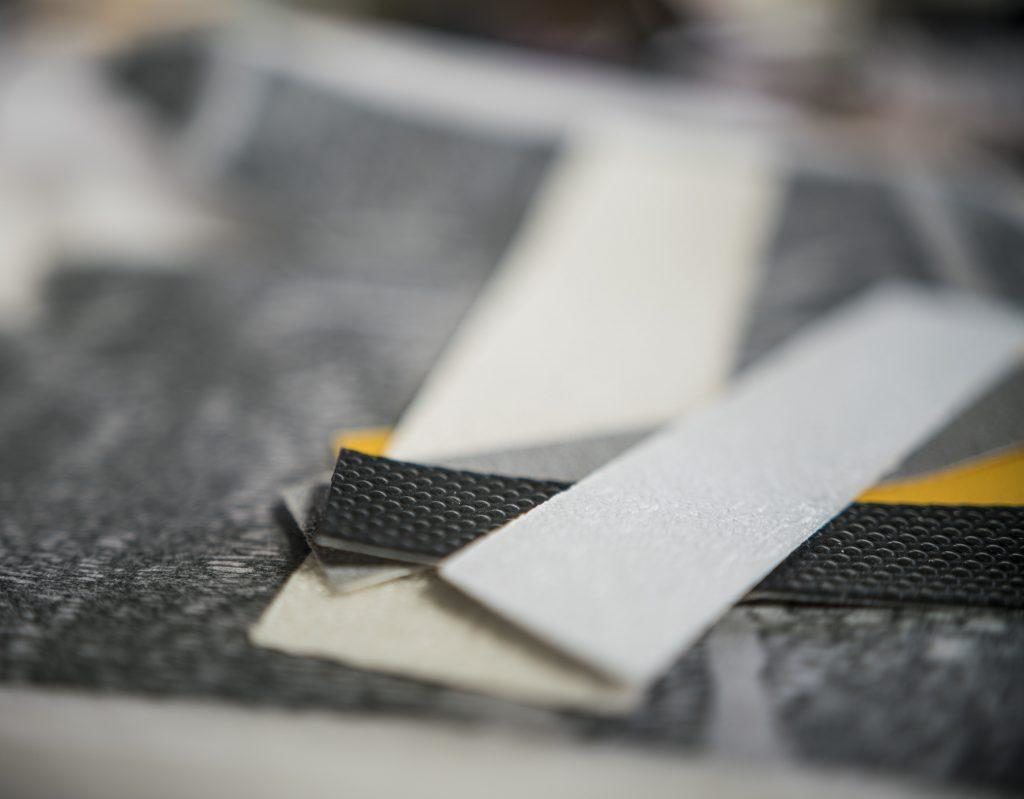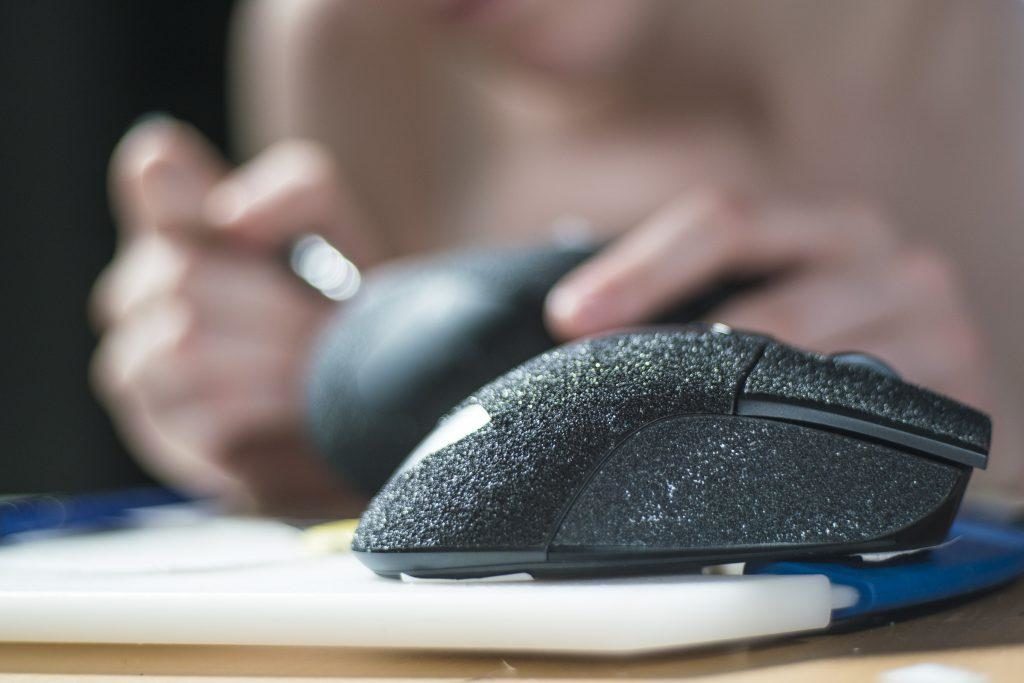Our grip, now made in the EU

In the beginning, as you could see on our first few blog posts and social media pictures – we used a standard, off-the-shelf solution as to adhesive grips for the Antgrip. The decision process behind this was quite simple – they were easiest to source and be provided in quantities sufficing the development process of Antgrip products. With that, came some compromises – the adhesive paper was thicker than we needed it to be – resulting in more difficult application process on the mouse itself, as well as a tendency to produce air gaps that were below the standard we set ourselves. Additionally, it was not quite black. It was more gunmetal gray than black.
Now that we are moving closer to production and final launch of the product, we began looking at other suppliers that would fulfill the below listed requirements from us:
- Made in the EU: as it is more environmentally conscious as well as helps to guarantee the product quality and consistency across multiple batches of product
- Thin, yet durable: the thinness and additional flexibility allows us to create more intricate designs of the Antgrip products, as well as makes it easier for the end user to apply it
- Higher grit rating, yet better grip: The first version of the grip has a standard sandpaper-equivalent grit rating of around 80-100, that we felt was a bit too harsh for most users. Therefore we wanted to find a product that was more in the 130-150 range, yet would improve upon the actual grip provided to the user
First, we were almost set to use the golden standard of abrasive tapes, a grip from 3M – the world reknowned work material and gear production company that makes high quality products in a variety of fields. Yet it does not comply with our first demand of the product, as it is made in the USA. The carbon tax to be shipped just a sheet of paper is much greater to our selected tape that is sourced from the United Kingdom. As far as the second and third demands go, we tried out a plethora of different materials and textures, some of the most vibrant ones are attached in the pictures below – and we chose an aluminium oxide based solution that has a mineral hardness rating (MOHS) of 9 on a scale of 1-10 (10 being diamond). When compared to silicon carbide, also commonly used in grip tapes, it offers better consistency across products as well as is not at all irritating to the skin. For the back side, we decided on a silicon glue-based solution that guarantees a solid fit that will not move around at all, yet will also not leave any residue when removing the grip, should the situation arise.
Should you have any further question as to our material choice and the thought process behind our designs – we will be happy to discuss them with you.







